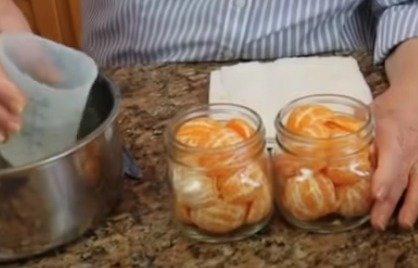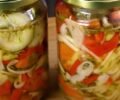Preserving Citrus for Long-Term Storage: A Step-by-Step Guide

orange
1
1. Peeling and Preparing the Oranges
Scoring the Peel: Start by scoring the peel without breaking into the flesh. This makes it easier to remove the peel without losing juices.
Removing the Pith: The white pith can add bitterness, so use a grapefruit knife to scrape it off. This step requires patience but significantly improves the flavor.
2. Segmenting the Oranges
The USDA suggests canning slices or whole mandarins. I found that halving them works best. Remove the central pithy part and as many strings as possible.

2
3. Filling the Jars
Jar Preparation: Use small pint jars. Place the halved mandarins with the outer side facing outward for a neat appearance.
Adding Syrup: Prepare a light to medium syrup by heating six cups of water with one cup of sugar. Pour the syrup over the oranges in the jars, leaving some headspace.

3
4. Processing the Jars
Water Bath Canning: Since citrus is high in acid, you can process them in a regular pot. Ensure the jars are covered with boiling water. At sea level, process for 10 minutes. At higher altitudes, like our 5000 feet, process for 20 minutes.
Cooling and Storing: Once processed, let the jars cool and check the seals. Properly sealed jars can be stored on your pantry shelves.
Benefits and Tips for Canning Citrus
Canned citrus is not only a beautiful addition to your pantry but also a nutritious one. Despite some loss of vitamin C during the canning process, these mandarins still offer fiber and other nutrients. Remember to store vitamin C supplements to ensure adequate intake during emergencies.

Ingredients
orange
Directions
1
1. Peeling and Preparing the Oranges
Scoring the Peel: Start by scoring the peel without breaking into the flesh. This makes it easier to remove the peel without losing juices.
Removing the Pith: The white pith can add bitterness, so use a grapefruit knife to scrape it off. This step requires patience but significantly improves the flavor.
2. Segmenting the Oranges
The USDA suggests canning slices or whole mandarins. I found that halving them works best. Remove the central pithy part and as many strings as possible.

2
3. Filling the Jars
Jar Preparation: Use small pint jars. Place the halved mandarins with the outer side facing outward for a neat appearance.
Adding Syrup: Prepare a light to medium syrup by heating six cups of water with one cup of sugar. Pour the syrup over the oranges in the jars, leaving some headspace.

3
4. Processing the Jars
Water Bath Canning: Since citrus is high in acid, you can process them in a regular pot. Ensure the jars are covered with boiling water. At sea level, process for 10 minutes. At higher altitudes, like our 5000 feet, process for 20 minutes.
Cooling and Storing: Once processed, let the jars cool and check the seals. Properly sealed jars can be stored on your pantry shelves.
Benefits and Tips for Canning Citrus
Canned citrus is not only a beautiful addition to your pantry but also a nutritious one. Despite some loss of vitamin C during the canning process, these mandarins still offer fiber and other nutrients. Remember to store vitamin C supplements to ensure adequate intake during emergencies.

Leave a Review
Please log in or register for a new account in order to leave a review.









